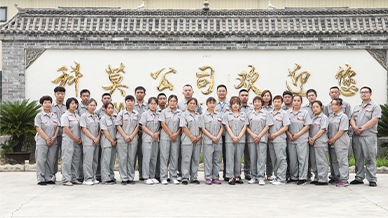power steering pressure pipe
Nov . 21, 2024 19:23 Back to list
power steering pressure pipe
Understanding Power Steering Pressure Pipes An Essential Component of Modern Vehicles
Power steering systems have significantly enhanced the driving experience by reducing the effort required to turn the steering wheel. At the heart of these systems lies the power steering pressure pipe, an often-overlooked component that plays a crucial role in ensuring the smooth operation of your vehicle’s steering mechanism.
What is a Power Steering Pressure Pipe?
The power steering pressure pipe is a high-pressure line that carries hydraulic fluid from the power steering pump to the steering gear. This fluid is essential for assisting the driver in steering the vehicle. The design and quality of the pressure pipe are critical, as they must withstand the high pressure generated within the system, typically ranging from 900 to 1200 psi when the steering wheel is turned.
Importance of the Pressure Pipe
The power steering pressure pipe is not merely a conduit for hydraulic fluid; it is a vital part of the steering system's efficiency. The pressure generated by the pump is transmitted through the pipe, allowing the steering gear to move with ease. A well-functioning pressure pipe ensures that the hydraulic fluid is delivered effectively, providing the necessary assistance to the driver. Any disruption in this supply can lead to steering difficulties, making the vehicle harder to control and increasing the risk of accidents.
Common Issues and Symptoms
Over time, power steering pressure pipes can develop problems, primarily due to wear and tear or exposure to harsh conditions
. Common issues include1. Leaks One of the most frequent problems is the development of leaks. Hydraulic fluid can escape from the pipe, leading to a drop in pressure which can severely affect steering performance. If you notice fluid spots under your vehicle, it could be a sign of a leaking pressure pipe.
power steering pressure pipe

2. Cracks and Damage Physical damage to the pipe, such as cracks, can compromise its integrity. This can occur due to corrosion, impact, or fatigue from constant use. Any damage should be addressed promptly to avoid a complete failure of the steering system.
3. Whining Noise A whining or groaning noise when turning the steering wheel can indicate issues with the pressure pipe or the power steering pump itself. This noise often signals an air leak or a drop in hydraulic fluid, which can make steering feel heavy or unresponsive.
Maintenance and Replacement
Regular maintenance is crucial for ensuring the longevity of your power steering system, including the pressure pipe. Here are some tips for maintaining this component
- Routine Inspections Periodically check the pressure pipe for visible signs of wear, leaks, or damage. Early detection can save you from more significant issues down the road.
- Fluid Levels Keep an eye on the power steering fluid levels. Low fluid levels can indicate a leak in the pressure pipe or elsewhere in the system.
- Proper Installation If replacement is necessary, ensure that the new pressure pipe is installed correctly. A professional mechanic will ensure it is mounted securely, preventing future leaks or damage.
Conclusion
The power steering pressure pipe may not be visible when you open the hood of your vehicle, but it is undeniably essential for safe and efficient driving. Understanding its role, recognizing potential problems, and maintaining it properly can enhance the overall performance of your vehicle's steering system. It’s always best to consult with a qualified mechanic if you suspect any issues with your power steering system to ensure your vehicle remains in optimal condition.
Latest news
-
Refrigeration Hose-HEBEI KEMO|Low Permeability&Pulse Resistance
NewsAug.12,2025
-
Refrigeration Hose-HEBEI KEMO AUTO PARTS TECHNOLOGY CO., LTD
NewsAug.12,2025
-
Refrigeration Hose - HEBEI KEMO AUTO PARTS TECHNOLOGY CO., LTD|Low Permeability&Ozone Resistance
NewsAug.12,2025
-
Durable AC Pressure Hose for Reliable AC System Repair
NewsAug.12,2025
-
Refrigeration Hose-HEBEI KEMO AUTO PARTS TECHNOLOGY CO., LTD|Low Permeability,Pulse-Resistance
NewsAug.11,2025
-
Refrigeration Hose-Hebei Kemao|Industrial Applications&Automotive Systems
NewsAug.11,2025
